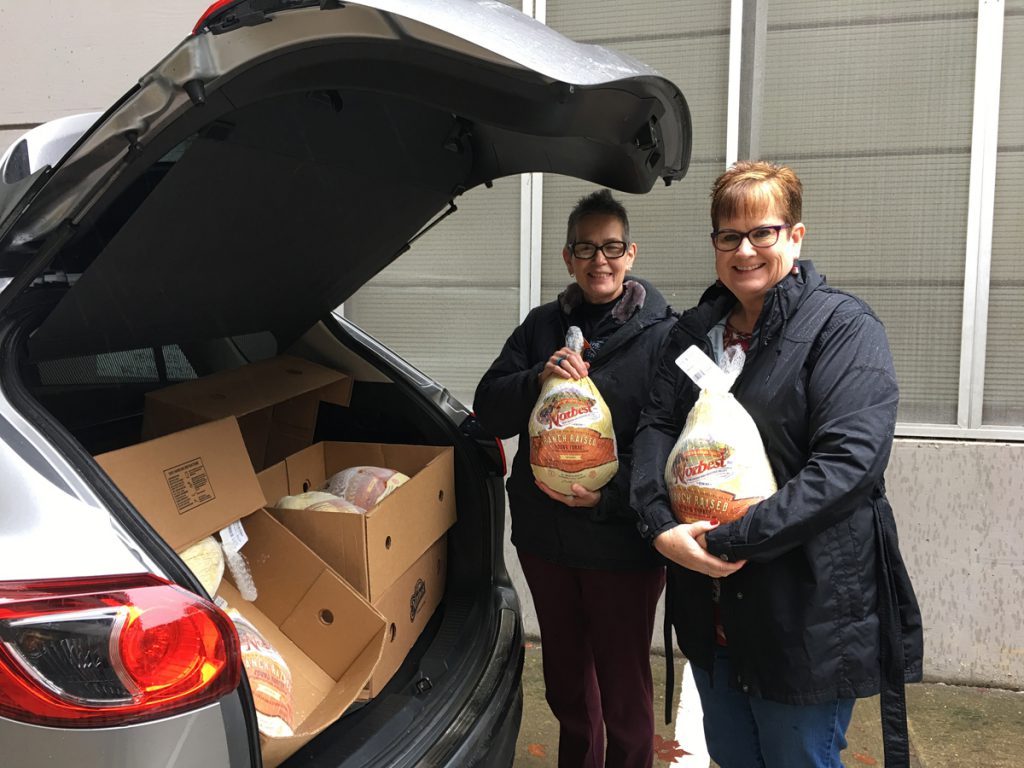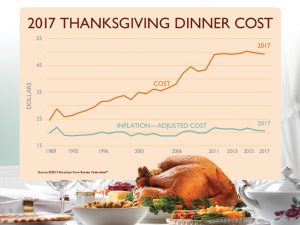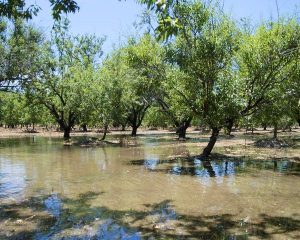-
Recent Posts
- Trade mission to Mexico concludes — important opportunities to connect on trade issues as well as New World Screwworm
- CDFA joins USDA trade mission to Mexico
- CDFA kicks off California State Employees Food Drive – Early!
- Agritourism – How Pumpkins are Grown in California
- Farm to School Month Grantee Spotlight: Yucaipa-Calimesa Joint Unified School District
Recent Comments
- Micah on Secretary Ross on Water, Workforce, and the Future of California Agriculture — from AgNet West
- CA agriculture value surpasses $60B | Western Livestock Journal on Value of California Ag production tops $60 billion for first time
- Kathy de Contreras on CDFA IT department honored at “Best of California” awards
- El costo económico de las deportaciones masivas ya es visible en California - Espanol News on Nine California Counties Make Top-10 List for Ag Sales in the U.S.
- Deportations are taking a toll on California’s economy – and have only just begun – The News Beyond Detroit on Nine California Counties Make Top-10 List for Ag Sales in the U.S.
Archives
- November 2025
- October 2025
- September 2025
- August 2025
- July 2025
- June 2025
- May 2025
- April 2025
- March 2025
- February 2025
- January 2025
- December 2024
- November 2024
- October 2024
- September 2024
- August 2024
- July 2024
- June 2024
- May 2024
- April 2024
- March 2024
- February 2024
- January 2024
- December 2023
- November 2023
- October 2023
- September 2023
- August 2023
- July 2023
- June 2023
- May 2023
- April 2023
- March 2023
- February 2023
- January 2023
- December 2022
- November 2022
- October 2022
- September 2022
- August 2022
- July 2022
- June 2022
- May 2022
- April 2022
- March 2022
- February 2022
- January 2022
- December 2021
- November 2021
- October 2021
- September 2021
- August 2021
- July 2021
- June 2021
- May 2021
- April 2021
- March 2021
- February 2021
- January 2021
- December 2020
- November 2020
- October 2020
- September 2020
- August 2020
- July 2020
- June 2020
- May 2020
- April 2020
- March 2020
- February 2020
- January 2020
- December 2019
- November 2019
- October 2019
- September 2019
- August 2019
- July 2019
- June 2019
- May 2019
- April 2019
- March 2019
- February 2019
- January 2019
- December 2018
- November 2018
- October 2018
- September 2018
- August 2018
- July 2018
- June 2018
- May 2018
- April 2018
- March 2018
- February 2018
- January 2018
- December 2017
- November 2017
- October 2017
- September 2017
- August 2017
- July 2017
- June 2017
- May 2017
- April 2017
- March 2017
- February 2017
- January 2017
- December 2016
- November 2016
- October 2016
- September 2016
- August 2016
- July 2016
- June 2016
- May 2016
- April 2016
- March 2016
- February 2016
- January 2016
- December 2015
- November 2015
- October 2015
- September 2015
- August 2015
- July 2015
- June 2015
- May 2015
- April 2015
- March 2015
- February 2015
- January 2015
- December 2014
- November 2014
- October 2014
- September 2014
- August 2014
- July 2014
- June 2014
- May 2014
- April 2014
- March 2014
- February 2014
- January 2014
- December 2013
- November 2013
- October 2013
- September 2013
- August 2013
- July 2013
- June 2013
- May 2013
- April 2013
- March 2013
- February 2013
- January 2013
- December 2012
- November 2012
- October 2012
- September 2012
- August 2012
- July 2012
- June 2012
- May 2012
- April 2012
- March 2012
- February 2012
- January 2012
- December 2011
- November 2011
- October 2011
- September 2011
- August 2011
- July 2011
- June 2011
Categories
- AG Vision
- Agricultural Education
- Agricultural Marketing
- Alternative Fuels
- Animal health
- Animal Welfare
- Asian Citrus Psyllid
- Biodiversity
- Border stations
- BSE
- Cannabis
- Cannella Panel
- Climate Change
- Climate Smart Agriculture
- Community-based Food System
- Conservation
- Dairy
- Drought
- Environment
- Fairs
- Farm Bill
- Farm Labor
- Farmers' Markets
- Fertilizer
- Food Access
- Food Safety
- Food Waste
- Glassy-winged Sharpshooter
- Growing California
- Healthy soils
- HLB
- Hydrogen
- Integrated Pest Management (IPM)
- Invasive Species
- Light Brown Apple Moth
- Livestock ID
- Measurement Standards
- Nutrition
- Organic agriculture
- Pierce's Disease
- Pollinators
- Specialty Crops
- State Board of Food and Agriculture
- Succession Planning
- Trade
- Uncategorized
Pages

A look back at Thanksgiving history – Country Turkey Loaf
As Californians put the finishing touches on their Thanksgiving recipes, here’s a look at an old-school holiday dish from the 70s, offered-up by the California Milk Advisory Board and the now-defunct California Turkey Industry Board. Thank you to the California State Archives at the Secretary of State’s office for sharing this from its extensive historical collection.

Posted in Agricultural Marketing
Leave a comment
Study finds that more than a quarter of American jobs linked to food and agriculture – from the Food Marketing Institute
A nationwide economic impact study has found that more than one-fifth (or 20.4%) of the nation’s economy is linked, either directly or indirectly, to the food and agriculture sectors and that more than one-fourth of all American jobs (28%) are similarly connected. Twenty-two food and agriculture organizations commissioned this research, available at www.FeedingTheEconomy.com. Among the most important findings:
Total Jobs: 43,311,057
Total Wages: $1.9 trillion
Total Taxes: $894.13 billion
Exports: $146.32 billion
Total Food and Industry Economic Impact: $6.7 trillion
To measure the total economic impact of the sectors, the analysis also includes the indirect and induced economic activity surrounding these industries, which captures upstream and downstream activity. For example, when a farm equipment retailer hires new employees because farmers are buying more tractors, experts consider the new salaries an indirect impact. Similarly, when a retail associate spends her paycheck, an induced economic impact occurs. Together, these have a multiplier effect on the already formidable direct impact of food and agriculture.
The economic data was compiled by John Dunham & Associates and is available at www.FeedingTheEconomy.com. The analysis illustrates the direct impact of food and agriculture on jobs, wages, economic output, exports, and state and local business taxes. The interactive website also breaks out the data at the national, state and congressional district levels.
Posted in Uncategorized
Leave a comment
Announcing California Healthy Soils Week – Dec 4 to Dec 7

Healthy Soils equal Healthy Lives. In California our soils help feed the world, save water, clean the air, and fight climate change. In recognition of these contributions, and in celebration of the annual World Soil Day, CDFA, alongside its state, federal and private sector partners, will be hosting California Healthy Soils Week, from December 4 to December 7, 2017.
This multi-day celebration—which will include panels, webinars, and tours—will highlight all the remarkable gifts healthy soils have to offer. We hope that by telling the story of California soil we can help Californians better understand how vital it truly is.
For more information as well as a link to CDFA’s comprehensive healthy soils web site, please click here.
Posted in Uncategorized
Leave a comment
CDFA employees donate more than 1,100 pounds of turkeys to Sacramento Food Bank

CDFA Headquarters employees Michelle Lehn (right) and Thea Lee load donated turkeys for delivery to the food bank. Employees at several of CDFA’s Sacramento-area offices and facilities ushered in the Thanksgiving season last week by donating more than 1,100 pounds of turkeys to the regional organization Sacramento Food Bank and Family Services. The donations are part of the annual California State Employees Food Drive.
Posted in Food Access
Leave a comment
Farm Bureau survey reveals reduction in cost of Thanksgiving dinner

The American Farm Bureau Federation’s 32nd annual price survey of classic items found on the Thanksgiving Day dinner table indicates the average cost of this year’s feast for 10 is $49.12, a 75-cent decrease from last year’s average of $49.87.
The big ticket item – a 16-pound turkey – came in at a total of $22.38 this year. That’s roughly $1.40 per pound, a decrease of 2 cents per pound, or a total of 36 cents per whole turkey, compared to 2016.
“For the second consecutive year, the overall cost of Thanksgiving dinner has declined,” AFBF Director of Market Intelligence Dr. John Newton said. “The cost of the dinner is the lowest since 2013 and second-lowest since 2011. Even as America’s family farmers and ranchers continue to face economic challenges, they remain committed to providing a safe, abundant and affordable food supply for consumers at Thanksgiving and throughout the year.”
The shopping list for Farm Bureau’s informal survey includes turkey, bread stuffing, sweet potatoes, rolls with butter, peas, cranberries, a veggie tray, pumpkin pie with whipped cream, and coffee and milk, all in quantities sufficient to serve a family of 10 with plenty for leftovers.
Consumers continue to see lower retail turkey prices due to continued large inventory in cold storage, which is up almost double digits from last year, Newton explained.
Foods showing the largest decreases this year in addition to turkey, were a gallon of milk, $2.99; a dozen rolls, $2.26; two nine-inch pie shells, $2.45; a 3-pound bag of sweet potatoes, $3.52; a 1-pound bag of green peas, $1.53; and a group of miscellaneous items including coffee and ingredients necessary to prepare the meal (butter, evaporated milk, onions, eggs, sugar and flour), $2.72.
“Milk production has increased, resulting in continued low retail prices,” Newton said. “In addition, grocers often use milk as a loss leader to entice consumers to shop at their stores.”
Items that increased modestly in price were: a half-pint of whipping cream, $2.08; a 14-ounce package of cubed bread stuffing, $2.81; a 30-ounce can of pumpkin pie mix, $3.21; a 12-ounce bag of fresh cranberries, $2.43; and a 1-pound veggie tray, $.74.
“Whole whipping cream is up about 4 percent in price, due to increased consumer demand for full-fat dairy products,” Newton said.
The stable average price reported this year by Farm Bureau for a classic Thanksgiving dinner tracks with the government’s Consumer Price Index for food eaten at home. But while the most recent CPI report for food at home shows a 0.5 percent increase over the past year (available online at http://www.bls.gov/news.release/cpi.nr0.htm), the Farm Bureau survey shows a 1.5 percent decline.
After adjusting for inflation, the cost of a Thanksgiving dinner is $20.54, the lowest level since 2013.

A total of 141 volunteer shoppers checked prices at grocery stores in 39 states for this year’s survey. Farm Bureau volunteer shoppers are asked to look for the best possible prices, without taking advantage of special promotional coupons or purchase deals, such as spending $50 and receiving a free turkey.
Shoppers with an eye for bargains in all areas of the country should be able to purchase individual menu items at prices comparable to the Farm Bureau survey averages. Another option for busy families without a lot of time to cook is ready-to-eat Thanksgiving meals for up to 10 people, with all the trimmings, which are available at many supermarkets and take-out restaurants for around $50 to $75.
The AFBF Thanksgiving dinner survey was first conducted in 1986. While Farm Bureau does not make any scientific claims about the data, it is an informal gauge of price trends around the nation. Farm Bureau’s survey menu has remained unchanged since 1986 to allow for consistent price comparisons.
Posted in Uncategorized
Leave a comment
Licensing Authorities Release Emergency Medicinal and Adult-Use Cannabis Regulations
California’s three state cannabis licensing authorities announced today that
proposed emergency licensing regulations for commercial medicinal and adult-use cannabis have been posted online and are available to the public for review.
The Department of Consumer Affairs’ Bureau of Cannabis Control, Department of Public
Health’s Manufactured Cannabis Safety Branch, and Department of Food and Agriculture’s CalCannabis Cultivation Licensing Division each developed the new regulations to reflect the law defined in California’s Medicinal and Adult-Use Cannabis Regulation and Safety Act (MAUCRSA).
The regulations and their summaries can be viewed by clicking the following links:
Bureau of Cannabis Control:
www.bcc.ca.gov/law_regs/bcc_prop_text_reg.pdf
www.bcc.ca.gov/law_regs/bcc_fact_sheet.pdf
CA Department of Food and Agriculture:
www.bcc.ca.gov/law_regs/cdfa_prop_text_emerg_reg.pdf
www.bcc.ca.gov/law_regs/cdfa_fact_sheet.pdf
CA Department of Public Health:
http://www.bcc.ca.gov/law_regs/cdph_prop_text_emerg_reg.pdf
http://www.bcc.ca.gov/law_regs/cdph_sum_emerg_reg.pdf
On June 27, 2017, the Governor signed MAUCRSA, which creates one regulatory system for both medicinal and adult-use cannabis. Prior to that law’s passage, state licensing authorities had released proposed regulations to govern the implementation of the Medical Cannabis Regulation and Safety Act. The public hearings and comments from a broad cross section of stakeholders that were informing that regulatory process have also been taken into consideration in the drafting of these proposed emergency regulations.
The licensing authorities expect the emergency regulations to be effective in December 2017. The implementation date for the issuance of the state commercial cannabis licenses remains the same: January 1, 2018. However, California will only be able to license those businesses that are in compliance will all local laws.
In addition, the Business, Consumer Services and Housing Agency will hold a workshop with state-chartered banks and credit unions next month to discuss regulatory and compliance issues, as well as potential approaches to banking cannabis-related businesses.
For information on all three licensing authorities, please visit the state’s cannabis web portal– cannabis.ca.gov. Follow the Bureau on Facebook, Twitter and Instagram for daily news and updates.
Posted in Uncategorized
Leave a comment
Changes Coming for Antibiotic Use on Livestock

Any antibiotic use – in people or animals – can lead to the development of antibiotic resistance, making it vital to recognize and eliminate unnecessary or inappropriate uses of antibiotics. In California, farmers, ranchers and veterinarians share a common goal with their counterparts in human medicine: A desire to work together to promote the judicious use of antibiotics to preserve them to the extent possible into the future – for both human health and animal health reasons.
In support of that goal, California was the first state in the nation to pass a law (Senate Bill 27-2015) that helps align antimicrobial use in livestock with human health models. Among other things, effective January 1, 2018, the law requires that for use in livestock, all antibiotics must be under veterinary direction. The law also requires a veterinarian’s prescription for the sale of all antibiotics, prohibits the use of antibiotics for growth promotion, and limits the circumstances in which antibiotics can be used for disease prevention.
Veterinarians are dedicated to safeguarding animal health and welfare needs. They make sure that necessary medications are available and administered in a timely manner for treating, controlling, or in specific circumstances, preventing disease. Livestock owners should know that establishing a veterinarian-client-patient relationship and working closely with veterinarians will ensure that livestock have the medical attention it needs. Building this relationship before an emergency is key to avoiding complications, whether the livestock is a pair of chickens in the suburbs, or a flock of 10,000 sheep in the Central Valley.
CDFA wishes to provide assistance during the transition period as over-the-counter antibiotics become regulated, requiring a veterinary prescription. We recognize the importance of ensuring that animal health care does not suffer during this transition period. We welcome all feedback, particularly as specific challenges or benefits are realized when the law becomes effective, and intend to work together to continually improve our Program.
For more information on antimicrobial resistance, the scope of Senate Bill 27-2015, and updates from the CDFA Antimicrobial Use and Stewardship Program, please visit our webpage at http://www.cdfa.ca.gov/ahfss/AUS and follow us on Facebook at https://www.facebook.com/AUSforCA/.
To provide feedback, ask specific questions or find out how to participate in program efforts, please feel free to email CDFA_AUS@cdfa.ca.gov.
Posted in Uncategorized
1 Comment
The state of groundwater recharge in the San Joaquin Valley – from the Public Policy Institute of California (PPIC)

By Ellen Hanak
When strong winter rains finally ended the recent five-year drought, many water districts seized the opportunity to recharge depleted aquifers. How did they do, and what barriers did they face? A public forum brought more than 30 experts together to discuss the benefits, opportunities, and barriers to groundwater recharge. The event was hosted by the California State Board of Food and Agriculture and the state Department of Water Resources.
My presentation focused on recharge in the San Joaquin Valley—a region that is home to more than four million people, half the state’s agricultural output, and most of its critically overdrafted groundwater basins, where pumping exceeds replenishment. Consequences include dry wells, sinking lands, and reduced supplies to weather future droughts.
As part of our ongoing work to explore practical and effective solutions to the region’s water challenges, the PPIC Water Policy Center recently surveyed local water districts about their groundwater recharge efforts. Although such efforts have been underway for decades in some parts of the valley, the state’s 2014 groundwater law has increased interest in using recharge to bring basins into long-term balance.
About 75% of respondents to our survey said they were actively recharging this year. Large water districts with formal recharge programs are doing the lion’s share of recharge, but there’s lots of interest from smaller agencies in getting in on the act.
Agricultural districts are already employing a broad mix of recharge tools, and many see potential for expansion. In contrast, urban districts—most of which rely heavily on groundwater—are much less active. The most widespread methods—used by two-thirds of agricultural districts surveyed—include allowing water to seep through unlined canals and irrigating crops with surface water instead of groundwater, which enables basins to recharge naturally (a method known as “in-lieu” recharge). Other popular options—used by half of agricultural districts—include directing water to dedicated “recharge basins” and applying extra water on irrigated cropland. Some districts also spread water on fallowed land and open space. Of these tools, recharge basins are being used most intensively, storing more than half of total recharge reported (roughly four maf). One caveat to this last finding is that many districts have been using some popular methods (cropland irrigation, in-lieu recharge, and unlined canals) without formally accounting for how much recharge occurs.
Posted in Uncategorized
Leave a comment
Secretary Ross at Innovation Conference: food producers must connect with consumers – from Capital Press

Secretary Ross in Orland before the second annual North State Innovation Conference, speaking with Glenn County Fair CEO Ryann Newman (r) and Kevin Spafford of Ryan Wealth Management. Photo by Tim Hearden, Capital Press
By Tim Hearden
ORLAND, Calif. — State Food and Agriculture Secretary Karen Ross held up the rice industry in the middle Sacramento Valley as an example of how growers can respond to public concerns about their production activities.
The industry’s effort about a decade ago to move away from winter residue burning by using water for decomposition quieted downwind complaints from urban residents while creating habitat for birds — and enhancing an already famous hunting ground, Ross said.
The move illustrates what California’s 77,500 farms often have to do to mollify concerns among the state’s roughly 40 million residents, many of whom may have formed misconceptions based on inaccurate information, she said.
“People don’t know how passionate we are about our land and all the steps we take to preserve it,” Ross told about 75 people at the second annual North State Innovations in Agriculture conference Nov. 8 at the Glenn County Fairgrounds.
She urged growers to work with environmental groups and cultivate relationships and human interactions with city dwellers and consumers.
“You have the water of the state, and you have the wildlife, the forests and the diverse landscapes,” Ross said. “If you want to be bolder going forward, you have to form partnerships and communicate with more people.”
Ross’ remarks came during a wide-ranging speech and question-and-answer session near the close of the conference, which was started to educate Northern California farmers and ranchers about technological advances and marketing trends.
Her message provided a bookend after keynote speaker David Schabazian, a manager for the Sacramento Area Council of Governments, opened the conference Nov. 7 by telling growers they should form partnerships with local government planners to have input on land-use policies that could maximize their farms’ earning potential.
Noting the conference’s focus on emerging technologies, Ross cautioned producers not to lose their human touch. She encouraged farmers to tell their stories on social media and in personal interactions with consumers.
“People can feel a connection with you even if they’ve never met you,” she said.
She pointed to former California Cattlemen’s Association president Matt Byrne, whose family’s SunFed Ranch markets its new grass-fed beef product lines by handing out samples at functions such as last year’s Natural Products Expo West in Anaheim, Calif.
“That takes a lot of effort,” Ross said, adding the ranch doesn’t sell all of its beef that way but still finds the venues valuable.
While California’s regulations often flummox growers, the upside is that the state’s products are coveted around the world because people know they’ve met high standards, she said. To that end, California Grown, an organization that promotes the state’s farm products, is working with the group Visit California to enhance food- and beverage-related tourism, which already accounts for 25 percent of all the tourism to the Golden State, she said.
Posted in Uncategorized
Leave a comment

